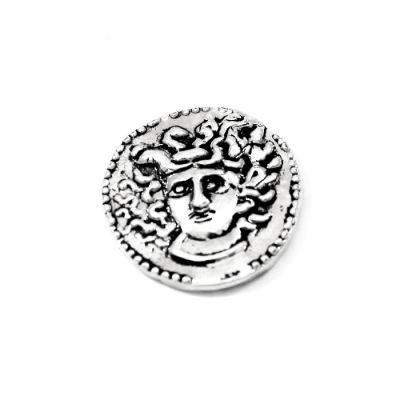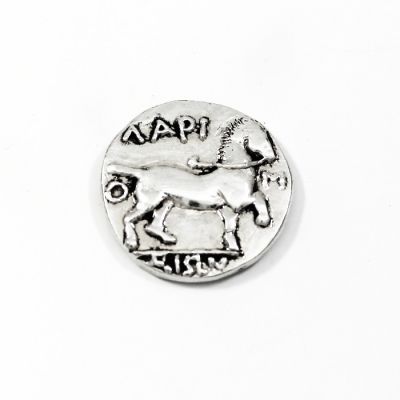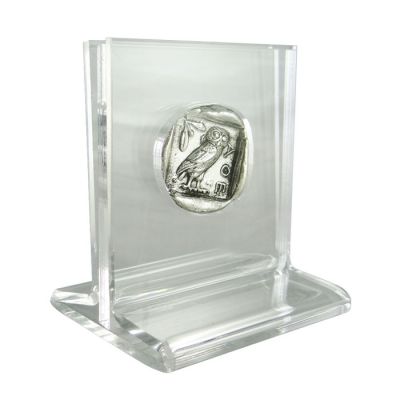Two drachma silver coin of Larissa. Inspired by the history of the city of Larissa, we created a copy of this specific coin in solid brass, silver-plated and placed in a specially designed acrylic case in order to be able to exhibit both sides. The one side of the coin depicts the head of a Larissa nymph and on the reverse there is a horse troting and the sign LARIS AION (ΛΑΡΙΣ ΑΙΩΝ). In ancient Thessaly the main occupations were agriculture and livestock farming.
The Thessalian horses were renowned all over Greece, even Alexander the Great in Thessaly found his famous Boukefala.
395-344 B.C. Larissa, Thessaly, Greece
Diameter of the coin: 2,5cm
Dimensions of the acrylic case: 5 cm x 6 cm x 5 cm
Copy in solid brass silver-plated in silver solution 999°.
Every coin is offered in an acrylic case for protection and better presentation and gift packaging.
Take a look at the rest of the coins collection and the set of five silver-plated coins.
All prices include VAT.
In ancient Thessaly the main occupations were agriculture and livestock farming. In the 4th century BC there is a development of trade in Feres, when the tyrants also controlled the ports of Pagasitikos. Famous was the Thessalian wine produced on the slopes of Ossa and Pelion as well as on the islands of Northern Sporades. So a bunch of grapes, on the back of the coins, are also characteristic of the Thessalian coinage. Various currencies, mainly magnesian cities, have this feature. Having an ally of the vast plains and the mild climate, the Thessalians were engaged in the breeding of horses, cattle and sheep. The Thessalian horses were renowned all over Greece, even Alexander the Great in Thessaly found his famous Boukefala. Numerous Thessalian coins have horse and rider performances, as well as pictures with bullfighting events.
Most of the Thessalian cities cut their coins during the Antiquity, most of which were silver (drachma, diadrachmo, etc.) or bronze (opols, etc.)
Source: larissanet
No posts found













